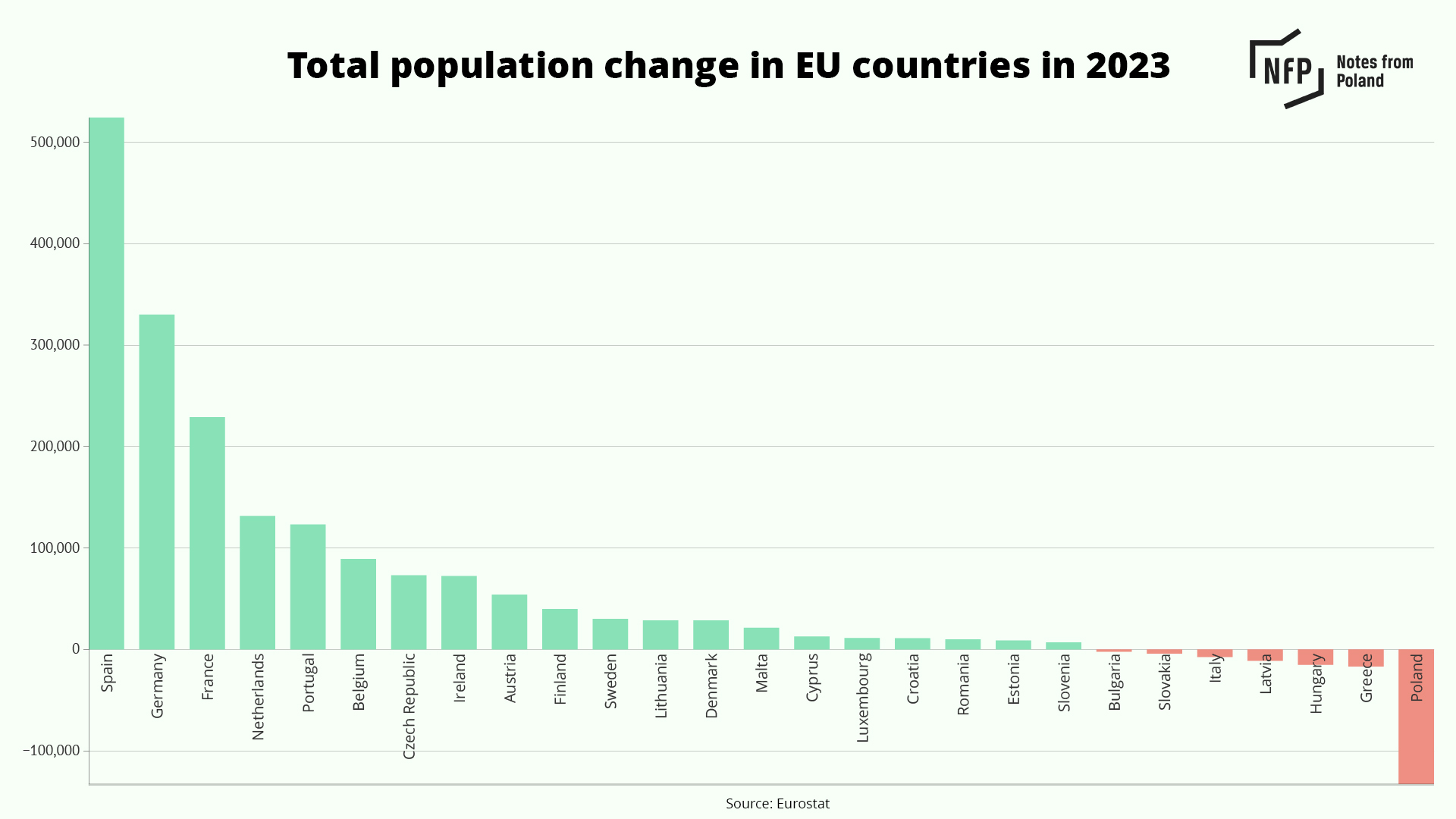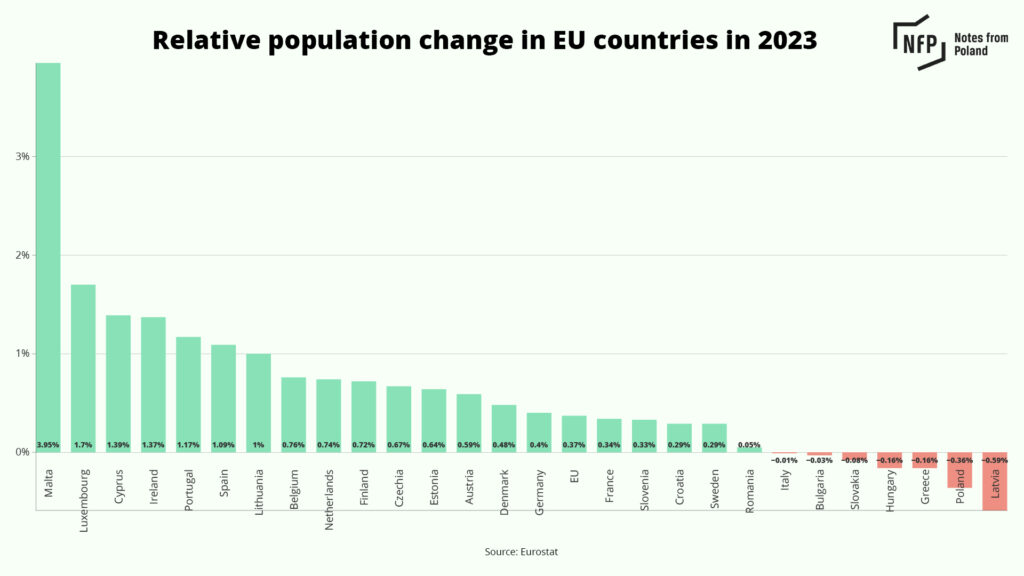Poland’s population fell by 133,000 last year, which was the largest decline among all European Union member states. In relative terms – measuring the size of the decline in relation to overall population – Poland had the bloc’s second-largest drop of 0.36%.
By contrast, most EU countries saw their populations increase last year, with Eurostat, the EU’s statistics agency, ascribing this largely to immigration and the influx of refugees from Ukraine. The bloc’s population as a whole grew by 1.65 million, or 0.37%, last year.
Poland’s figures continue a trend of demographic decline in recent years, with the country’s statistical agency forecasting that the population will continue to shrink in the coming decades.

On 1 January 2024, Poland’s population was 36,620,970, down from 36,753,736 on the same day a year earlier, a decrease of 132,766 people, show Eurostat’s new data.
That was the sixth consecutive year of decline in Poland. Since 2018, the last year that Poland saw population growth, its population has decreased by more than 1.35 million.
However, that decline has become more pronounced compared to other EU countries since the outbreak of the pandemic, when Poland suffered some of the EU’s highest excess death rates.
While Poland recorded the EU’s 10th largest nominal population decline in 2019, since then it has always been in the EU’s top three: top in 2020, third in 2021, second in 2022, and first against last year.
In relative terms, Poland had the EU’s greatest population decline in 2020, the sixth highest in 2021, fourth highest in 2022 and second highest in 2023. Last year, only Latvia, which saw its population drop by 0.59%, had a higher relative figure than Poland.

While the Polish population continued its decline last year, the EU population as a whole recorded a second successive annual increase after the declines seen during the coronavirus pandemic. On 1 January 2024, the bloc’s population was 449.2 million, up from 447.56 million on the same day a year earlier.
“The observed population growth can be largely attributed to the increased migratory movements post-COVID-19 and to the influx of displaced persons from Ukraine who received temporary protection status in EU countries, as a consequence of the Russian war of aggression in February 2022,” wrote Eurostat.
Sorry to interrupt your reading. The article continues below.

Notes from Poland is run by a small editorial team and published by an independent, non-profit foundation that is funded through donations from our readers. We cannot do what we do without your support.
Among European countries, the population of Spain (+525,097), Germany (+330,000) and France (+229,020) increased the most in nominal terms last year.
The largest nominal decreases apart from Poland’s were recorded by Greece (-16,789) and Hungary (-15,117). The population increased last year in 20 member states and decreased in seven.
In relative terms, the highest population growth was recorded in the small states of Malta (+3.95%), Luxembourg (+1.7%) and Cyprus (+1.39%).
Poland needs two million new foreign workers over the next decade to counteract the ageing of its population, says the state social insurance agency.
It notes that recent years have seen mass immigration, with over a million foreign workers now registered https://t.co/LW5278uawm
— Notes from Poland 🇵🇱 (@notesfrompoland) July 12, 2023
Poland has experienced unprecedentedly high levels of immigration in recent years, and has also received a large number of Ukrainian refugees. However, this has failed to offset a negative demographic trend influenced by falling birth rates and excess deaths during the pandemic.
Last year, Poland recorded its lowest number of births since the Second World War. It was the 11th year in a row in which the number of deaths have exceeded births.
That trend looks set to continue this year, with only 64,500 children born in the first quarter of 2024, the lowest figure in Poland’s history, reports news weekly Wprost.
Poland’s state statistical agency, GUS, estimates that Poland’s population will continue to decline in the coming decades and could fall to as low as 26.7 million by 2060, which would be 27% lower than today.
The number of births in Poland last year was the lowest since WWII.
It was the 11th year in a row in which deaths have exceeded births. The country’s population has declined by almost one million over that period.
Read our full report here: https://t.co/UtzEbTitwd pic.twitter.com/JeIu81fjw8
— Notes from Poland 🇵🇱 (@notesfrompoland) February 1, 2024
Main image credit: Matt Bennett / Unsplash

Alicja Ptak is deputy editor-in-chief of Notes from Poland and a multimedia journalist. She has written for Clean Energy Wire and The Times, and she hosts her own podcast, The Warsaw Wire, on Poland’s economy and energy sector. She previously worked for Reuters.



















